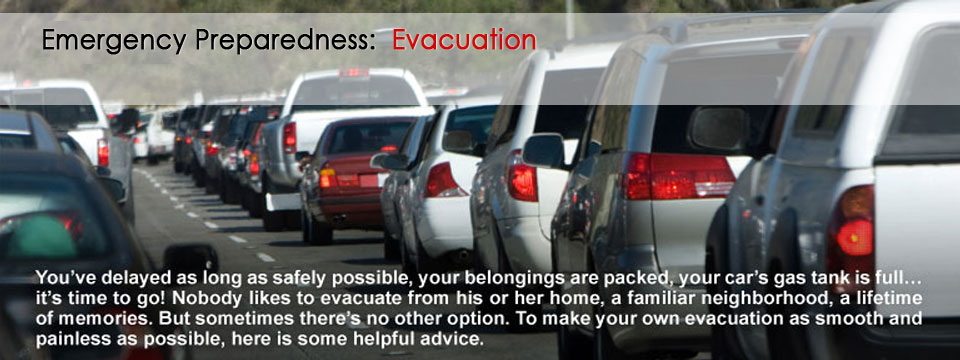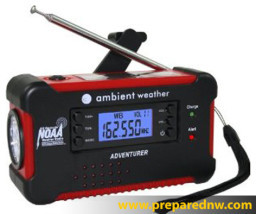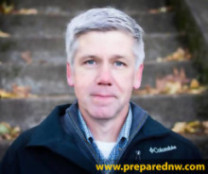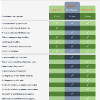During most natural disasters like flooding or ice and snowstorms, the best advice is to stay home and shelter in place. What I’ll be discussing in this article are those times when you need to leave. These times would be due to a house fire, a house structurally unfit to live in; damage from an earthquake, flooding, landslide, wildfire or a mandatory official evacuation.
If you are leaving the house due to an emergency, there are three main factors to consider: Information, Navigation and Transportation.
First is information. This is your top priority, as this will help you avoid citywide or regional hazards that might interfere with your evacuation. Travel information might include the condition of roadways, recommended escape routes, locations of emergency shelters, incoming weather events or the availability of gasoline. There are a number of methods for receiving information relating to emergencies and travel conditions. The most common is the Internet, television and radio. If the power is out, your choices will be limited to battery or hand-cranked radios or a weather alert radio. During power outages check landline telephones as they tend to be battery backed-up and you may be able to contact friends or family living outside the disaster area. If you are away from home, your car radio can be used for information gathering. Other communication tools to use while away from home are the FRS (Family Radio Service) or Walkie-Talkie, CB (Citizen Band) radio like those used by truckers, and GMRS (General Mobile Radio Service) included on most advanced two-way radios. FRS and GMRS have the frequency range to receive NOAA (National Oceanic and Atmospheric Administration) weather and disaster emergency information.
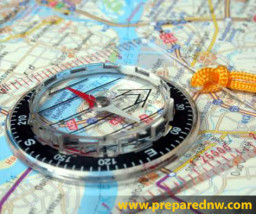 Second is navigation. GPS (Global Positioning System) is great when it works but what about a volcanic eruption, global war, etc. Physical maps such as those made of paper that don’t depend on technology, a road atlas (DeLorme or Rand McNally) and a magnetic compass are the best alternative. Navigation allows you to efficiently travel from point A to point B as well as making detours without getting lost. Plan your escape route from home using information that you know about road conditions, blocked roads and traffic flows. Identify possible alternative routes in the event the primary route doesn’t work. Plan to violate conventional traffic rules in times of emergencies, if required.
Second is navigation. GPS (Global Positioning System) is great when it works but what about a volcanic eruption, global war, etc. Physical maps such as those made of paper that don’t depend on technology, a road atlas (DeLorme or Rand McNally) and a magnetic compass are the best alternative. Navigation allows you to efficiently travel from point A to point B as well as making detours without getting lost. Plan your escape route from home using information that you know about road conditions, blocked roads and traffic flows. Identify possible alternative routes in the event the primary route doesn’t work. Plan to violate conventional traffic rules in times of emergencies, if required.
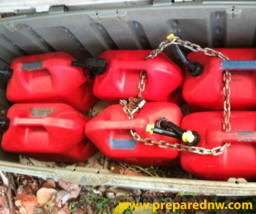 Lastly is your mode of transportation. Make sure you have enough fuel stored to travel at least 500 miles. Before leaving your home, fully fuel your vehicle from these gas cans and bring a spare, full can, to take with you. Pack your vehicle with supplies including things you might need for roadside emergencies. To successfully evacuate, have a reliable vehicle that’s always regularly maintained and in ready condition. Fuel efficiency will trump a heavy vehicle due to the fact that fuel might be hard to find. Many other types of transportation are available like motorcycles, boats and bikes for local moves but nothing beats the car. The car allows you to move a minimum of 500 pounds of supplies great distances in relative safety and comfort while dry and warm. Your supplies are mostly secure and you have a place to shelter should you get stopped or stranded in route.
Lastly is your mode of transportation. Make sure you have enough fuel stored to travel at least 500 miles. Before leaving your home, fully fuel your vehicle from these gas cans and bring a spare, full can, to take with you. Pack your vehicle with supplies including things you might need for roadside emergencies. To successfully evacuate, have a reliable vehicle that’s always regularly maintained and in ready condition. Fuel efficiency will trump a heavy vehicle due to the fact that fuel might be hard to find. Many other types of transportation are available like motorcycles, boats and bikes for local moves but nothing beats the car. The car allows you to move a minimum of 500 pounds of supplies great distances in relative safety and comfort while dry and warm. Your supplies are mostly secure and you have a place to shelter should you get stopped or stranded in route.
Having a plan and preparing in advance can turn an unbearable situation into a comfortable inconvenience.
Share your personal experiences and/or questions about Emergency Preparedness and Transportation in the comments below.
![]() Prepared Northwest offers families in Oregon and Washington consultations and customized emergency preparedness plans that fit their needs and budget. Contact us today for a free initial consultation. 503-757-7572 or email preparednw@gmail.com.
Prepared Northwest offers families in Oregon and Washington consultations and customized emergency preparedness plans that fit their needs and budget. Contact us today for a free initial consultation. 503-757-7572 or email preparednw@gmail.com.

